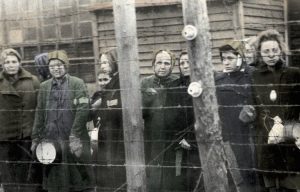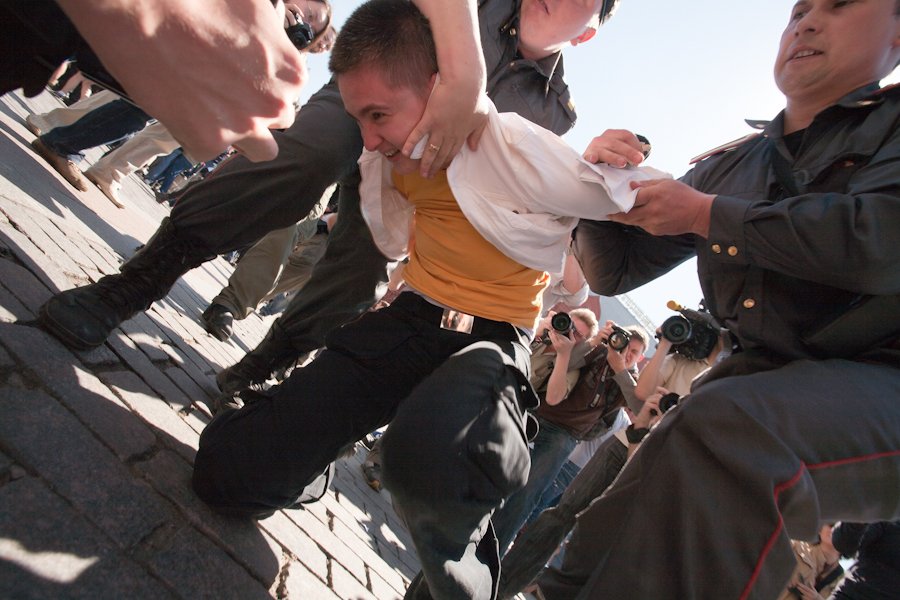
Second in a series of five memoirs written by our mother, Olha Froliak-Eliashevska, Nazi death camp survivor.
Our mother was born in a family of eight children in the village of Karliw (present-day Prutivka), Sniatynsky Raion, Ivano-Frankivsk Oblast on December 26, 1919.
As a young Ukrainian student and political activist, she was arrested on December 11, 1943, imprisoned in Wels/Donau and Linz Gestapo prisons, and then incarcerated in
Ravensbrück concentration camp (acknowledged period of detention - from December 11, 1943 to April 5, 1945)
.
This is the continuation of her story…
The prisoners, carrying those who had died during the night and the ill, then lined up on the Appelplatz, the prison yard for daily roll call. Morning roll call could take hours... the women stood silently in rows in rain, wind, snow or freezing temperatures, dressed only in a loose-fitting prison uniforms and wooden shoes, no underwear, no stockings, some with thin head coverings. Any prisoners that collapsed or were found to be missing faced beatings, torture or execution.
After an exhausting 12-hour work day at local German factories, digging trenches or performing other manual labour, the women returned to the camp, carrying the ill and those that had died during the day. The roll call was repeated in the evening on the Appelplatz.
The night was coming to an end. Four a.m… and not enough sleep. Dozia (Teodoziya) Hayvas and I lay curled up together, totally immobile, on our narrow bunk. These dreadful sleeping conditions provided us with little strength to survive another day. Every day in the concentration camp was different. New challenges and dangers lurked behind the breaking dawn…
A harsh light illuminated the barracks. A loud whistle and a shrill command came from the kapo’s assistant: “Alle raus!” (Everybody out!). The inmates dressed hurriedly and ran into the main square, where they stood in rows, waiting for the early morning roll call, huddled together as closely as possible so as to keep their emaciated bodies warm. The courtyard was cold and dark. We stood shivering in the dim morning light, trying to retain the warmth that our bodies had accumulated in the crowded barrack during the night.

“Weiter, weiter gehen!… Verstanden?” (Come on, come on, move along! Understand!?) shrieked the kapo. “Ruhe!... Halt die Klappe!” (Quiet! Shut your trap!).
We clung to each other - five Ukrainian women - momentarily frozen in complete silence. But, the shouts of the kapos and their assistants snapped us out of our drowsiness, ending our distant dreams of warmth.
“O Holy Mother of God!” whispered elderly Mariya Hryhortsiv. Her patience and spirit were always a comfort to us. Her husband had been tortured to death by the Gestapo at Bergen-Belsen concentration camp, and her daughter was imprisoned in Ravensbruck, in another barrack. Mariya Hryhortsiv’s eyes were often filled with tears of pain. She wrung her hands constantly, as if speaking to her dead husband.
“Hurry up! Hurry, let’s catch up!” murmured Teodoziya Hayvas. Stooped, her frail shoulders bent with pain, she stumbled out of the barrack with us. Her long, loose-fitting prison garb trailed behind her in the mud. Her eyes misted over and looked up stoically, as if searching for her son, who was hiding from the Gestapo somewhere in his native land. Her soul wept bitterly, tears streamed from her eyes, but the calm on her face was almost terrifying.
Next to me, Dozia Hayvas hurried to keep up with the others. Every day, she spoke of and prayed for the two children that she had left behind in the care of some good people. Her thoughts gave her not a moment’s rest; her soul was torn; her heart wept with invisible tears.

The silent crowd of women prisoners pushed forward towards the square. The last silver stars glittered in the dark blue sky. The first crimson rays of light began to appear as the sun rose behind the dark horizon.
The long rows stretched across the main square. The Ukrainian women from barrack No.16 stood huddled together. Oleksandra Hnatkivska swayed beside me. Her cropped grey hair glistened like silver in the crimson light of the rising sun. She stood numb with fear, her eyes wide and questioning. She seemed utterly petrified, a body turned to stone.
As if through a dream, we heard her say softly: “Pray! Just pray!” Those words touched my tortured mind. My half-dead body shuddered at this word: “Pray!”
The dark blue sky was suddenly illuminated by the crimson rays of the rising sun. Far in the distance, we could barely see the trees glistening after the recent thunderstorm.
The eyes of the Gestapo and their kapos followed us closely. We felt a chill of fear run down our spine…
Outlined against the rising sun, surrounded by an aura of golden sunlight, we again saw our suffering Mother. Her lips whispered a prayer, which penetrated our souls: “Hail Mary, full of Grace…”
My heart trembles; a sharp pain cuts through my body.
The emaciated bodies stand in rows, like tree stumps after a raging fire. The sick and elderly women fall to the wet ground. The kapos drag these bodies forward, prodding them with their feet to see whether they are still alive. I want to close my eyes, but is it possible? The pain in my sore head throbs incessantly against my temples. For a split second, I lose my grip on reality… but, when I open my eyes, the same rows of exhausted women stretch before me.
Oleksandra Hnatkivska’s grey head sways near me, a prayer on her lips. She is the living image of Our Lady, pure and enlightened, immune to any kind of spiritual torment. She prays in her heart and in her soul, chanting a song for her daughter Oda and her baby granddaughter Zoya, imprisoned in the “Bunker”.
And we also pray, our mouths numbed by the cold, bitter wind.
The shrill cries of the kapos echo loudly in the still morning. “Achtung!” (Attention!). Our shaking feet grasp the damp soil. Our glazed eyes look into the distance.
The sun climbs higher and higher into the sky…
A new day has dawned. Another day of Gestapo terror and violence…

Olha Froliak-Eliashevska
Prisoner No.49061
Ravensbrück concentration camp for women
When the Red Army liberated the camp in April 1945, they found 3,500 prisoners clinging to life. The rest had been sent on a death march. In total, just 15,000 of the 130,000 prisoners lived to see its liberation. In the end, Ravensbruck killed between 30,000 and 50,000 women. They met their end at the hands of brutal guards, kapos and experimenting doctors, frozen and starved to death on cold, earth floors, and fell victim to the diseases that plagued the overcrowded barracks. Their ashes now fill Schwedtsee, on whose romantic shores the death camp was built.






